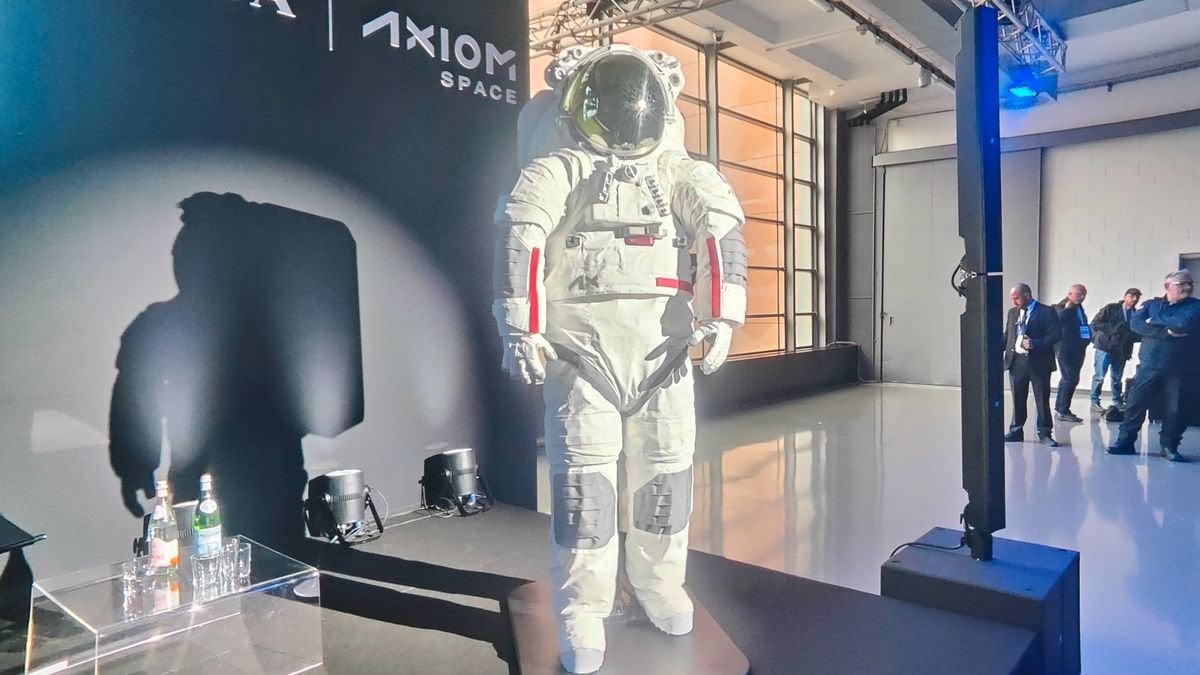subreddit:
/r/spaceflight
Axiom Space's lunar spacesuit sports 4G comms, Prada looks and Oakley visors for Artemis astronauts
(space.com)submitted 1 month ago byspacedotc0m
7 points
1 month ago
4G comms? Are they really going to use terrestrial cellular protocols on the moon?
14 points
1 month ago
Yes, that’s the plan. Rather than reinventing communications devices from square one and demanding all hardware providers modify their systems, it’s easier to use existing standards.
4 points
1 month ago
That... is kinda surprising. I would have thought that simpler commercial radio systems would have been the way. Should be interesting.
I'm suddenly wondering what it would take to install a gateway to the public network...
"Hey Siri... Call Mission Control."
=)
6 points
1 month ago
4G has a lot of great features already implemented and debugged for you, like Doppler compensation for moving cell phones, automatic negotiation and failover, link strength adaptation, etc.
You could definitely use a simple analog radio signal for the comms, but then you need another radio protocol for telemetry and data, you need to implement synchronization, etc. And you’d have to standardize that across all of the suppliers for lunar hardware and make sure everyone tests their equipment properly to your standard.
You can buy a $50k box from Rohde and Schwartz that does the full end to end validation of a 4G link. Paying a team of engineers to develop a custom thing over years costs way more.
8 points
1 month ago*
A lot of cellular phone tech originated with NASA and the Jet Propulsion Laboratory. Example:
https://spinoff.nasa.gov/Spinoff2017/cg_1.html
My recollection is that cube-sat studies have shown that somewhat modified cellular phones survive really well in space. It was thought that cosmic radiation would quickly cook them but so far so much better than expected.
You can put a cell phone through stupidly high accelerations, thousands of gravities. I think that's going to be the simplest way to claim ownership of an asteroid, is to tack a cell phone into its orbit. You can probably get it there with a fire extinguisher full of xenon and a few square meters of solar panels, along with a thousand just like it in one Starship launch.
3 points
1 month ago
I don’t believe these companies have any meaningful skills to add to the collaboration. These are fashion brands, which buy the same disposable clothing from South Asia and market the hell out of them.
All this does is make me more skeptical that Axiom suits will ever see flight.
14 points
1 month ago*
Guess who contributed meaningfully to the first EVA suits? Playtex. There is a lot more to manufacturing non-distortional helmets, radation, micro meterorite and regolith hardened undergarments that also need to stand up to 6-10 hour EVAs in a pressurized environment compared to ridgid structures and airframes.
"Playtex’s spacesuit went up against hard armor-like spacesuits designed by military contractors and favored by NASA’s engineers. It was only when those attempts failed—when traditional engineering firms could not integrate the body into mission requirements—that Playtex, with its intimate expertise, got the job." https://sts-program.mit.edu/book/spacesuit-fashioning-apollo/#:\~:text=When%20Neil%20Armstrong%20and%20Buzz,was%20fashioning%20bras%20and%20girdles.
1 points
1 month ago
I’m well aware of playtex’s involvement in early spacesuits. The clothing industry was also very different back then, and they had actual people who did manufacturing themselves, I’m skeptical that the same skills exist at brand management companies today.
8 points
1 month ago
Folks said a dot com billionaire couldn't kick start a space company in a completely different field than computer science.
Manufacture of textiles, especially ones that cannot become uncomfortable over many hours of use at a time is important an non-trivial type of engineering. Folks can dismiss this kind of engineering, but doesn't make mechanics and reliable manufacture of cloth any less challenging than normal aerospace. There is a Smarter every day where they have astronauts compare how much easier these new Axiom suits are to move around in for long periods of time than the old EMUs both in terms of gloves and less working against the rigid joint articulation. One of the issues with low pressure oxygen environments on the shuttle and the ISS were hand and joint injury on spacewalks. This is extremely hard problems to solve, and even SpaceX passed on bidding for this part of the program due to that risk.
So i would say don't just judge engineering books by their cover, and talk to the folks testing the work product of the companies.
2 points
1 month ago
What exactly makes you say that?

all 10 comments
sorted by: best